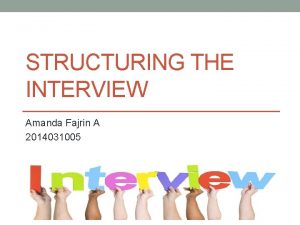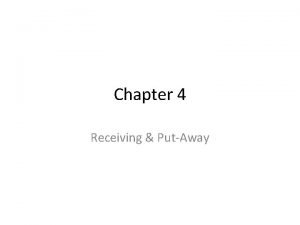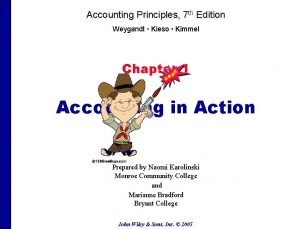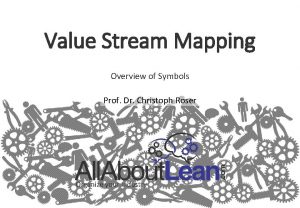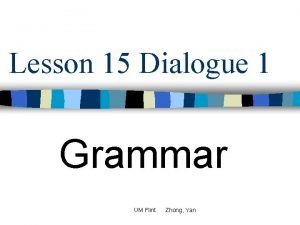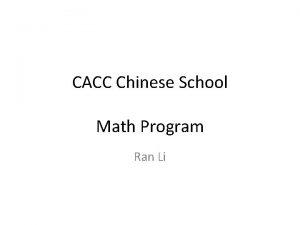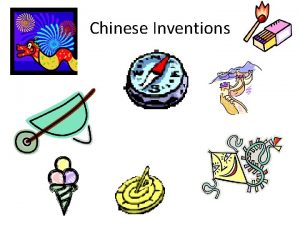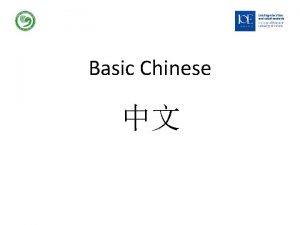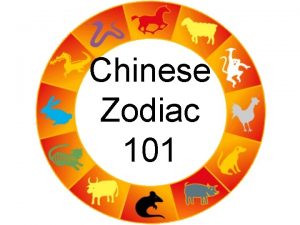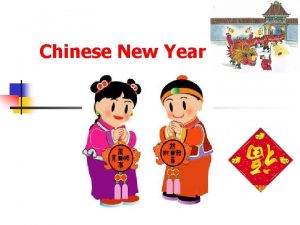Designing a Lesson for High School Chinese Sequenced














- Slides: 14

Designing a Lesson for High School Chinese Sequenced Instruction for Better Understanding Presented by: • Lanting Xu, teacher of Chinese at Bellarmine College Preparatory • Jiaying Howard, Professor of Chinese at the Monterey Institute of International Studies

What will we discuss today? • Criteria for effective learning • Overall considerations in lesson planning • How to choose and create activities • Implementing an instructional sequence

Program Components • • Full year textbook Workbooks (2) Teacher’s books (2) Audio downloads (Free w/ purchase of the book) http: //www. cheng-tsui. com/store/products/huanying/ huanying_volume_1_audio_cd

Means to achieve effective learning • Understand lesson content and learning goals • Characteristics of Chinese • Set up time and progress • Intensive lesson progression • Reflect and make improvements

Considerations in Choosing activities 1. Lesson plans should reflect a sequenced instructional purpose 2. Each class period should have a mix of activities 3. Pair or group activities are best followed by a quiet writing activity

Instructional sequence for each lesson Competency-based instructional sequence Introduction Extension Evaluation Getting the Basics Guided Practice Application

Introduction • Introduce the topic of the lesson • Invite students to participate • Develop student learning methods e. g. p. 1 of Huanying Vol. 1, Textbook

Getting the Basics Students at this stage: – Learn basic functions – Rely on memorizing and recognition Sample Classroom Activities: – Students quiz each other on vocabulary – Reading and listening comprehension practice – Students role play dialogues e. g. p. 77 of Huanying Vol. 1 / Part 1, Workbook

Guided practice Students at this stage: – Apply language mechanically – Make many mistakes – Rely on sentence meaning Classroom Activities are: – Focus on certain expressions – Set up a limited language environment – Control answers – Focus on a controlled language ability e. g. p. 41 of Huanying Vol. 1 / Part 1, Workbook

Application Students at this stage: – More familiar with vocab, sentence structure, and expressions of the lesson – Want more than drills Classroom Activities are: – Open and communicative that integrate different language skills – Provide authentic situations that promote varying answers – Emphasize solving problems e. g. p. 81 of Huanying Vol. 1 / Part 1, Workbook

Evaluation • Formal and informal assessment • Combine student’s and teacher’s assessment • Formal assessment should include memorization and application • Standards should be known by students e. g. Appendix, Huanying Vol. 1 / Part 1, Teacher’s Book

Extension Incorporate language beyond the classroom: – Eating at a Chinese restaurant – Watching Chinese movies, TV, radio, and music – Chatting with Chinese people in online games • Connect community service with language learning • Consider extra credit! e. g. p. 37, Huanying Vol. 1, Textbook

Questions? Contact the authors at: lantingxu@gmail. com (Lanting Xu) jhoward@miis. edu (Jiaying Howard) Continue the conversation with your peers at Peer. Source my. cheng-tsui. com/forum/593

Thank you for attending We will be emailing you a brief survey for your feedback on this online seminar. Visit www. cheng-tsui. com for more information on the Huanying series.
 Primary 3 malay worksheets
Primary 3 malay worksheets Tunnel sequence adalah
Tunnel sequence adalah Receiving and putaway
Receiving and putaway The accounting process is correctly sequenced as
The accounting process is correctly sequenced as Organize
Organize Crescenta valley high school summer school
Crescenta valley high school summer school Assignment in spanish
Assignment in spanish Integrated chinese lesson 15 dialogue 1
Integrated chinese lesson 15 dialogue 1 Primary leaving certificate
Primary leaving certificate Cacc chinese school
Cacc chinese school Fspos
Fspos Typiska drag för en novell
Typiska drag för en novell Tack för att ni lyssnade bild
Tack för att ni lyssnade bild Ekologiskt fotavtryck
Ekologiskt fotavtryck Varför kallas perioden 1918-1939 för mellankrigstiden
Varför kallas perioden 1918-1939 för mellankrigstiden

